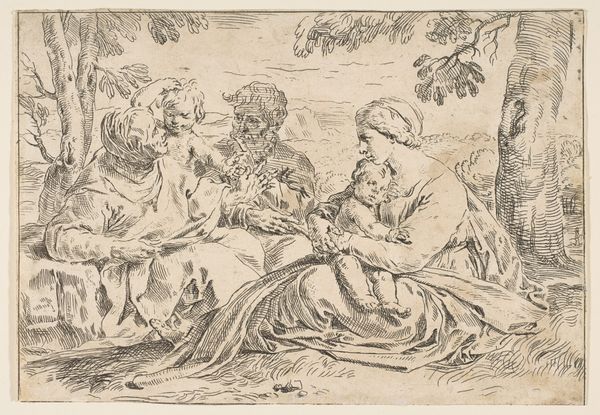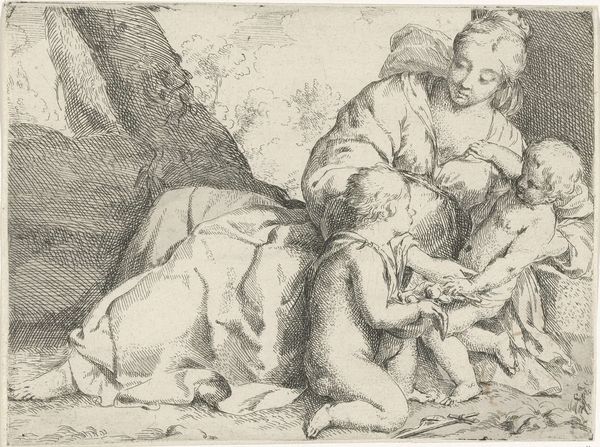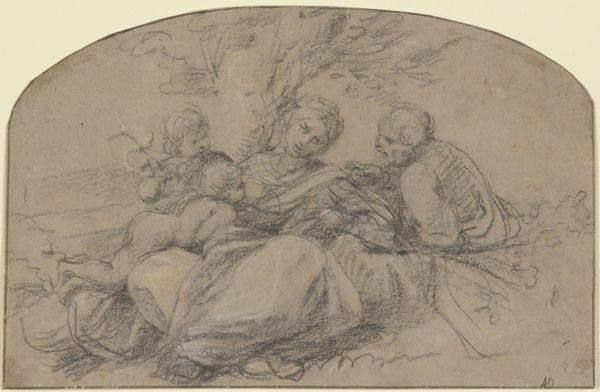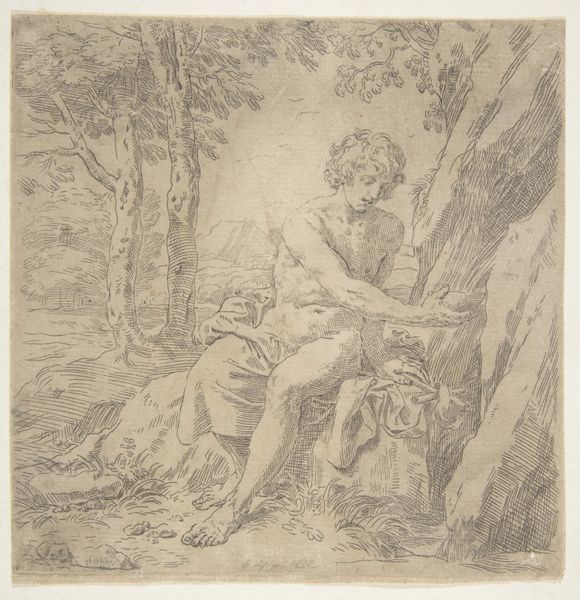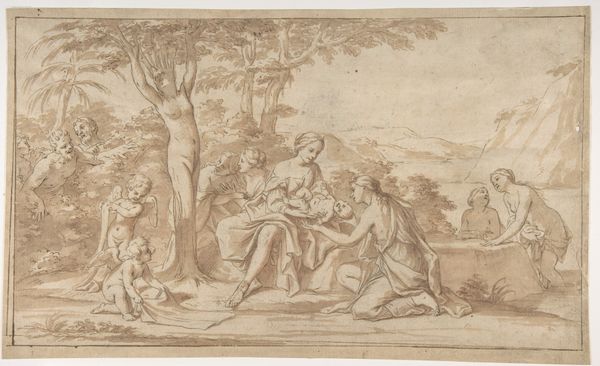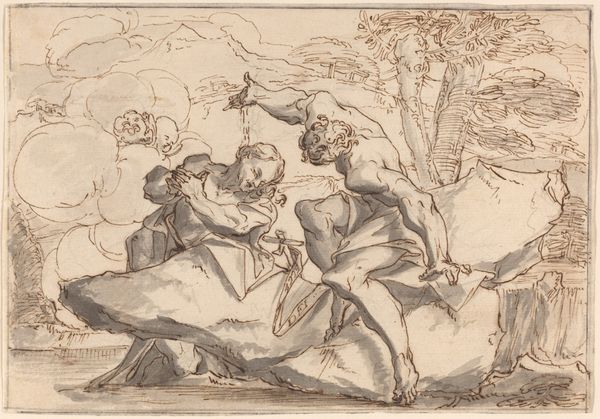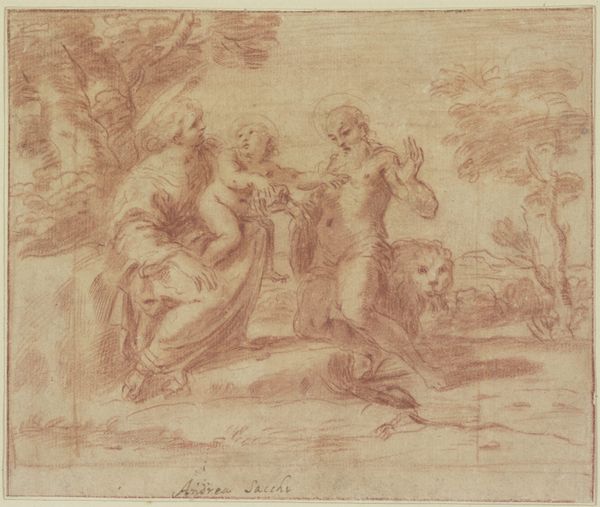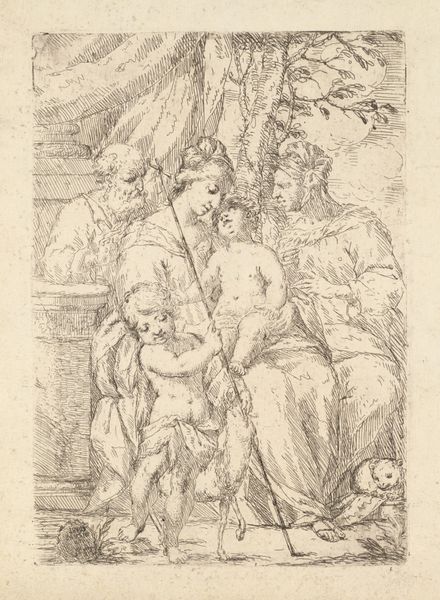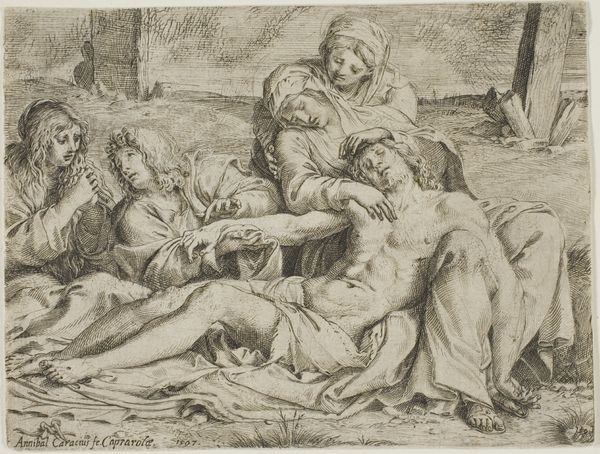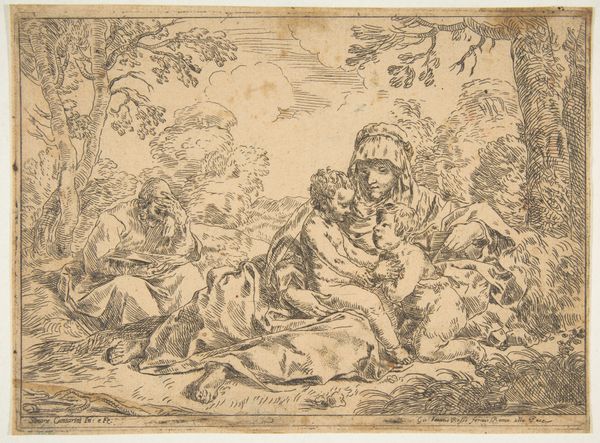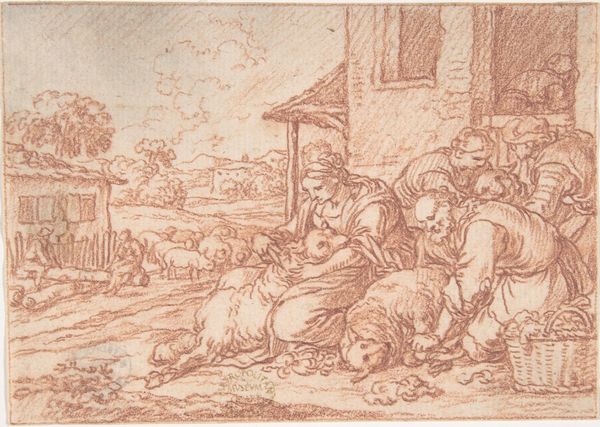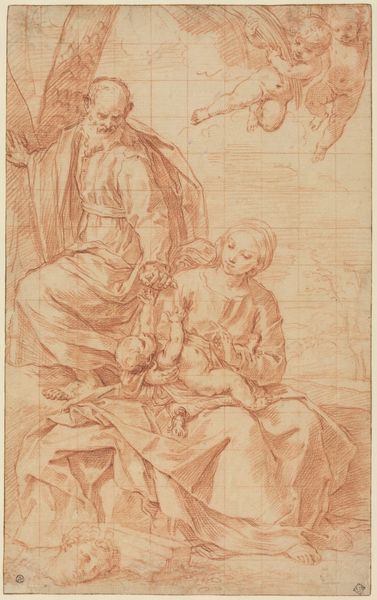
drawing, ink
#
drawing
#
high-renaissance
#
landscape
#
figuration
#
ink
#
pencil drawing
#
history-painting
Copyright: Public Domain
Curator: Gazing at this ink drawing, I am immediately struck by a sense of tenderness and familial warmth. It feels quite intimate. Editor: Indeed! This is attributed to Titian, titled "The Holy Family with the Infant John the Baptist under a Tree", presently held at the Städel Museum. Considering Titian's workshop, one can explore questions around who created the artwork and the studio’s practice for producing such preparatory works, right? Curator: Precisely. Although considered to be in his style, it's difficult to assert with complete certainty if he himself did the handwork. The scale is also striking. I am immediately interested in this contrast of family intimacy and landscape expansiveness in what seems to be a rather small scale drawing. It speaks to a universality, doesn't it? Editor: From a materialist lens, consider the significance of ink as a medium. Its accessibility compared to fresco or oil opened the possibility of production. Think, also, about the skill embedded in producing varied tonality only through the layering of lines. This allows Titian to offer subtle differences between, for instance, the skin of Joseph versus the foliage in the distance. Curator: You’re absolutely right about the line work. Look at how he evokes form and shadow simply through hatching and cross-hatching. Notice, too, the use of negative space—it is equally important in defining the figures. It allows our mind to do some work to assemble the characters depicted and sets an ambient ethereal mood that makes the characters float in an in-between zone, no? Editor: Absolutely. That tension plays directly into the rise of the “divine” artist as having the skill of not simply copying, but representing in form, something that previously was immaterial. To consider art materials, access to artistic production, and, in this particular instance, reproductive dissemination methods are ways to question traditional and very constructed ideas about the ‘divine’ touch of art. Curator: Thinking of our contemporary obsession with identity, one wonders who he imagined this to be a depiction *of*... beyond "family," I mean. Does that family exist in the work and in the materials, as well as in Titian’s own ideas around lineage and value? Editor: These are important reflections when approaching Titian's work in terms of accessibility of materials and subject matters, so prevalent across different economic groups today. Curator: It seems we’ve only scratched the surface. Editor: Right. There's always something new to uncover when we consider the hands, materials, and contexts that contribute to a piece of art.
Comments
No comments
Be the first to comment and join the conversation on the ultimate creative platform.
